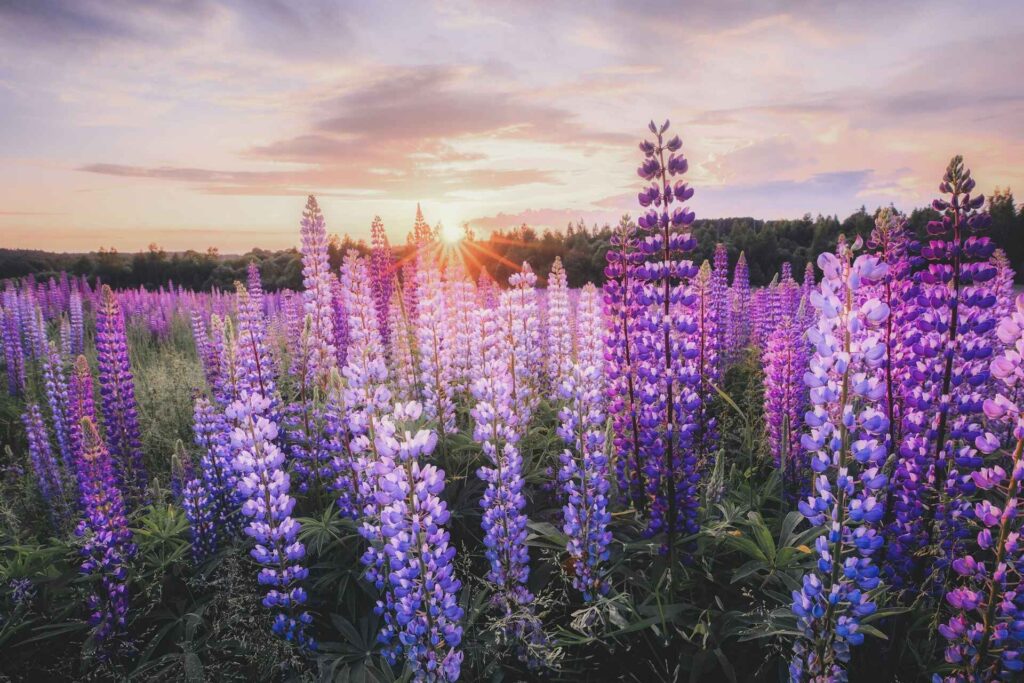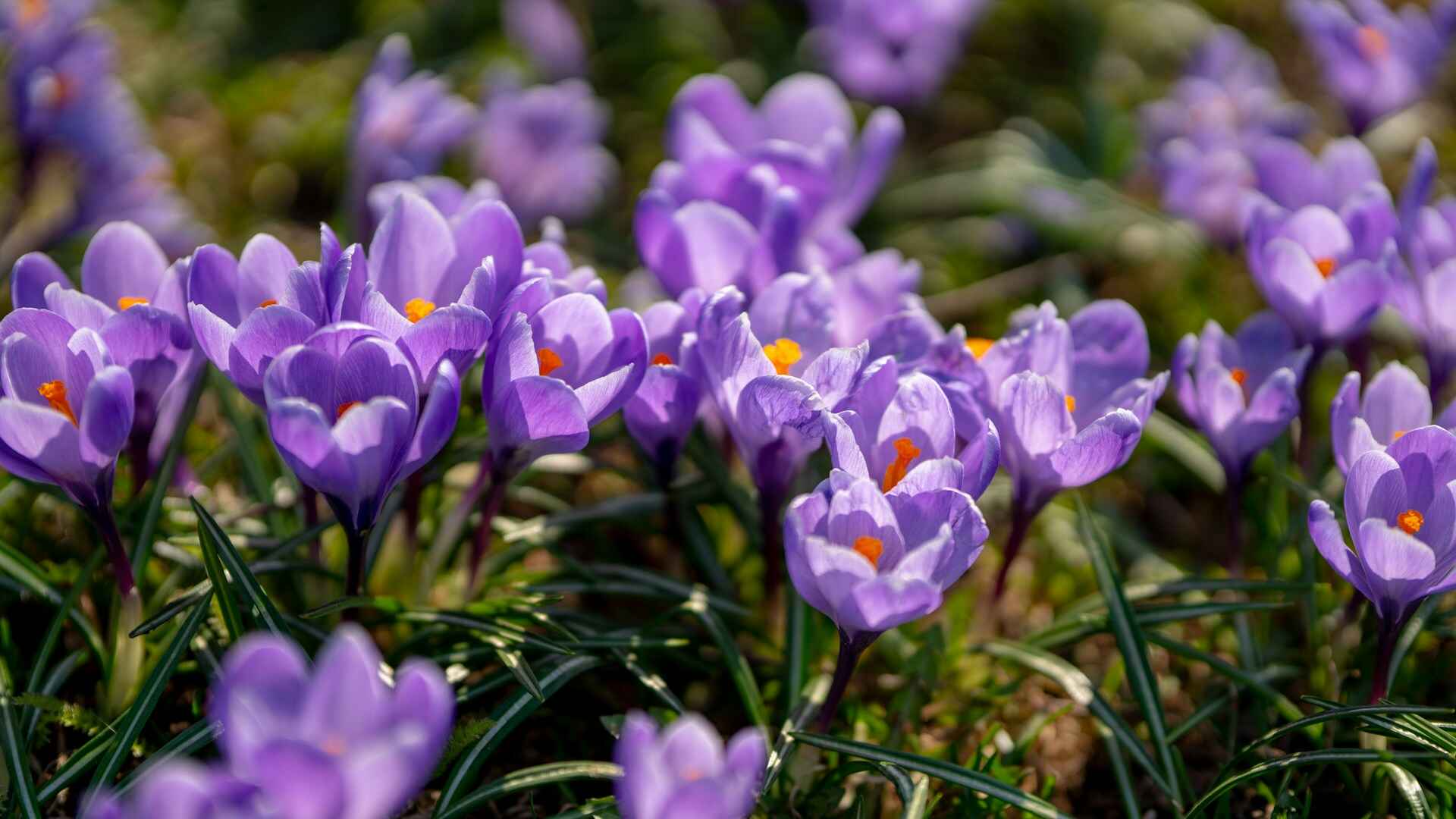Florida’s villages are famous for their beautiful landscapes and plant diversity. Among all the plants that grow in this sunny state one group stands out for their visual appeal: deep purple leaf plants that grow in full sun and don’t flower. They are beautiful on their own and prove how adaptable and beautiful nature is. Let’s get into these plants, their characteristics, benefits and how they fit into the village landscape.
The Beauty of Deep Purple Leaf Plants
Deep purple leaf plants are gorgeous. Their dark foliage is a contrast to the green and colorful plants in Florida’s gardens. This contrast is even more pronounced in full sun where the sun highlights the purple tones.
They come in all shapes and sizes from small groundcovers to larger shrubs and trees. They add a touch of class and sophistication to any landscape and can be dramatic or subtle depending on the plant and where you put it.
The deep purple color is due to high levels of anthocyanins, pigments that give red to blue to purple colors. They add to the beauty of the plant and protect them from environmental stresses like UV and herbivory.
Adaptability to Full Sun
One of the main things about these deep purple leaf plants is they love full sun. Florida’s sun and warmth is perfect for them. They are adapted to full sun and heat so they are great for gardens and landscapes in Florida’s villages.
Unlike other plants that will wilt or scorch in full sun these deep purple leaf plants thrive. Their dark foliage has pigments that protect them from UV rays so they can stay colorful and healthy in the toughest conditions.
Like anthocyanins can absorb UV light acting as a natural sunscreen for the plant. This is important in Florida where UV is high.
No Flowers, No Problem
One of the other cool things about these plants is they don’t have flowers. Many gardeners might see this as a negative but I think it’s a positive. No flowers means the foliage is the star of the show and those gorgeous purple leaves can be the main attraction.
This is especially useful in garden design where the consistent color and texture of the foliage can be a stable and reliable backdrop for other plants and features to sit against. And no flowers means less maintenance as there’s no deadheading or dealing with spent blooms to worry about.
And no flowers means less pests that target flowers so less pest control. More sustainable and eco friendly garden.
Popular Deep Purple Leaf Plants in Florida
Several deep purple leaf plants are great for Florida gardens. Let’s take a look at a few of these:
Purple Heart (Tradescantia pallida)
Also known as wandering Jew, Purple Heart is a tough perennial with purple leaves. It’s a great ground cover that can also be used in containers and hanging baskets. Purple Heart is easy care and full sun loving.
The stems are fleshy and can root at the nodes so it’s a great ground cover as it spreads easily. The leaves are long and pointed so adds texture to the garden.
Persian Shield (Strobilanthes dyerianus)
With its iridescent purple leaves it’s a show stopper. This plant likes full sun to partial shade and adds a tropical look to the landscape. The leaves have a metallic sheen to them so they really pop.
Native to Myanmar, Persian Shield can grow up to 3 feet tall and is often used as an ornamental in tropical and subtropical gardens. The leaves are broad with serrated edges and the color can vary from deep purple to silver depending on the light.
Purple Fountain Grass (Pennisetum setaceum ‘Rubrum’)
This ornamental grass has burgundy-purple foliage and arching plumes. It’s great for adding height and movement to the garden. Purple Fountain Grass likes full sun and is drought tolerant once established.
This grass can grow up to 4 feet tall with feathery flower spikes that emerge in late summer and last into fall. The deep purple color of the foliage makes it a great addition to any landscape and the way it sways in the wind adds a dynamic to the design.
Purple Pixie Loropetalum (Loropetalum chinense var. rubrum ‘Purple Pixie’)
Compact and deep purple foliage. Great for borders, containers and ground cover. Purple Pixie Loropetalum is very tough and can handle any soil.
Small fringed flowers are white or pink. Up to 2′ tall and 5′ wide. Good for many different uses in the garden.

Benefits of Using Deep Purple Leaf Plants
Adding deep purple leaf plants to your garden gives you more than just looks:
Low Maintenance
These are low maintenance, perfect for all gardeners. Full sun and pest & disease resistant means less work.
For example Purple Heart is tough and can grow in sandy to clay soil. Minimal watering once established and drought tolerant.
Water Efficiency
Many of these plants are drought tolerant, a must in Florida’s hot and dry climate. Once established they require minimal watering and will conserve water.
Purple Fountain Grass for example has deep roots that can access water in the deeper soil layers so you don’t have to water as often. It’s a water wise choice.
Wildlife Habitat
These plants may not produce flowers but they still contribute to the ecosystem. Their dense foliage provides shelter and habitat for beneficial insects and small wildlife.
The thick fleshy leaves of Purple Heart can be a hiding place for beneficial insects like ladybugs that help control pest populations. Purple Fountain Grass dense growth can be a nesting site for small birds and mammals.
Erosion Control
Groundcover varieties of deep purple leaf plants are great for erosion control. Their extensive root systems will stabilize the soil and prevent erosion especially on slopes and areas prone to runoff.
For example Purple Heart’s spreading habit can cover large areas of soil and prevent erosion from wind and rain. The roots will bind the soil so it won’t wash away during heavy rains.
Integrating Deep Purple Leaf Plants into Your Landscape
Designing a garden with deep purple leaf plants takes thought and imagination. Here are some tips to help you make the most of these beauties:
Contrast and Complement
Use the deep purple foliage to contrast with green, silver or variegated plants. This will make the purple leaves pop even more and add interest to your garden.
For example, pair Persian Shield with silver-leafed plants like Dusty Miller (Senecio cineraria) and the silver leaves will highlight the metallic sheen of the Persian Shield, making both more beautiful.
Layering
Use plants of different heights and textures to add depth and dimension. Taller plants can be a backdrop for shorter ones, ground covers can fill in spaces and tie everything together.
For example, use Purple Fountain Grass as a tall dramatic backdrop and plant Purple Heart at the base and you’ll have layering. This will add height and depth to your design.
Focal Points
Use deep purple leaf plants as focal points in your garden. Their color will draw the eye and create a central point for everything else to orbit around.
Place a Persian Shield in a prominent spot, like at the entrance to a garden path or as a centerpiece in a container garden and you’ll have a showstopper. The leaves will shimmer and draw the eye to the plant.
Containers and Borders
These plants are also great for container gardening and borders. Use them to define spaces, line pathways or add color to patios and balconies.
Purple Pixie Loropetalum with its compact growth is perfect for containers and small spaces. Plant it in a decorative pot and put it on a patio or balcony and you’ll have a pop of color.
Real-World Application: A Case Study
In a Florida village, the residents decided to redo their community garden. They wanted a low maintenance, beautiful space that could handle the heat. After consulting with a local horticulturist they chose to use several deep purple leaf plants.
The project involved:
Assessment and Planning
First we assessed the existing garden and planned the new layout. The horticulturist recommended Purple Heart, Persian Shield and Purple Fountain Grass.
The assessment included soil type, sunlight and existing plantings. The goal was to create a design that would showcase the deep purple foliage and keep the plants healthy and long lived.
Soil Preparation
The existing soil was tested and amended to be well draining and suitable for the plants. Organic compost and mulch was added to improve soil structure and fertility.
Good drainage is important for many deep purple leaf plants as waterlogged soil can cause root rot and other problems. By amending the soil with organic matter the garden team improved the drainage and nutrient holding capacity of the soil and created a perfect growing environment for the plants.
Planting and Arrangement
The plants were planted in layers and focal points. Purple Heart was used as a ground cover, Persian Shield and Purple Fountain Grass were placed to add height and movement.
The arrangement was to create a natural flow and balance. Taller plants were placed at the back or center of the garden beds, shorter plants in front. This layering created depth and made the garden look good from different angles.
Maintenance Plan
A maintenance plan was put in place to ensure the garden’s long life. This included watering during establishment, fertilizing periodically and mulching to retain moisture and suppress weeds.
The maintenance plan also included monitoring for pests and diseases, although the chosen plants were low maintenance and hardy. Regular inspections and prompt action kept the garden in top condition.
The result was a beautiful low maintenance garden that looked good all year round. The deep purple foliage popped against the green lawn and other plantings and the drought tolerance of the plants meant they loved the full sun.
Understanding the Science Behind Deep Purple Leaves
To get the full effect of deep purple leaf plants you need to understand the science behind the color. The deep purple color is due to high levels of anthocyanins which are pigments found in various parts of the plant, leaves, stems and roots.
Role of Anthocyanins
Anthocyanins are part of the flavonoid family. These pigments produce a range of colors from red and pink to purple and blue. In deep purple leaf plants the anthocyanins accumulate in the vacuoles of the leaf cells and that’s what gives the foliage its color.
Anthocyanin production can be influenced by light, temperature and the overall health of the plant. In full sun the intense light can trigger more anthocyanin production and deeper more vibrant colors.
Benefits of Anthocyanins
Anthocyanins do several important jobs in plants:
- UV Protection: These pigments can absorb ultraviolet (UV) light and protect the plant’s tissues from sun damage. This is particularly useful in sunny climates like Florida where UV radiation is intense.
- Antioxidant Activity: Anthocyanins have antioxidant properties and can neutralize free radicals within the plant cells. This can improve the overall health and resilience of the plant.
- Pest Deterrence: The bitter taste and potential toxicity of anthocyanins can deter herbivores and pests from feeding on the plant. Another layer of defense.
Selecting the Right Deep Purple Leaf Plants for Your Garden
When selecting deep purple leaf plants for your garden you need to consider a few things to get the best results. Here are some to consider:
Climate and Growing Conditions
Many deep purple leaf plants love Floridas sun but you need to choose the right one for your specific growing conditions. Consider soil type, water availability and temperature extremes.
For example Purple Heart can tolerate a wide range of soil conditions so it’s a good choice for many garden situations. Persian Shield prefers well draining soil and may need more attention so it doesn’t get waterlogged.
Garden Design and AestheticsF
Think about how the plants will fit into your overall garden design. Consider their size, shape and growth habit and how they will work with other plants in your garden.
For example Purple Fountain Grass with its tall arching form can add height and movement to a bed. Its deep purple foliage looks great with shorter, more compact plants like Purple Pixie Loropetalum for a balanced look.
Maintenance and Care
Consider the maintenance required for each plant. While many deep purple leaf plants are low maintenance some may need more attention to thrive.
Purple Heart is low maintenance and can do with neglect. Persian Shield needs pruning and pest watching. 😉
Real-Life Examples of Deep Purple Leaf Plants in Action
Let’s look at some real life examples of how deep purple leaf plants can transform a garden in Florida.
Residential Garden in Miami
A Miami homeowner wanted a low maintenance, water efficient garden that would thrive in the hot sun. They chose to use a mix of deep purple leaf plants including Purple Heart, Persian Shield and Purple Fountain Grass.
The garden was designed in layers with Purple Heart as ground cover, Persian Shield as mid height and Purple Fountain Grass for height. The result was a beautiful low maintenance garden that required very little water and year round interest.
The homeowner said the garden attracted beneficial insects like ladybugs and pollinators and required only occasional pruning and mulching.
Public Park in Orlando
A public park in Orlando was renovated to improve the landscape and make it more visitor friendly. The landscape design team decided to use deep purple leaf plants to add color and texture to the garden beds.
They used Purple Pixie Loropetalum to create low borders around pathways and garden beds and Purple Fountain Grass to add height and movement to larger planting areas. The deep purple foliage was a great contrast to the green lawns and flower beds.
Visitors loved the new design and said the deep purple leaf plants added a nice touch to the landscape. The plants were low maintenance so the park maintenance team could focus on other areas of the park.
Community Garden in Tampa
In Tampa a community garden project was created to be sustainable and beautiful for residents to grow their own produce and enjoy nature. The project team decided to use deep purple leaf plants to add interest and habitat for beneficial insects.
They used Purple Heart and Persian Shield to create colorful borders around the garden beds and Purple Fountain Grass in the corners to add height and structure. The deep purple foliage was a nice contrast to the green leaves of the vegetables and added a touch of beauty to the garden.
Garden members said the deep purple leaf plants attracted bees and butterflies and helped with pollination and increased vegetable production. The plants were low maintenance so the garden members could focus on their crops.
Tips for Growing and Caring for Deep Purple Leaf Plants
To have successful deep purple leaf plants you need to follow some basic rules. Here are some tips to grow and maintain these beauties:
Planting
- Choose the Right Spot: Full sun to partial shade, depending on the plant. Most deep purple leaf plants like full sun but can tolerate some shade.
- Soil: Make sure the soil is well draining and add organic matter if needed. This will help with soil structure and feed the plants.
- Spacing: Space them according to their mature size to allow for air circulation and not overcrowding. This will reduce pest and disease.
Watering
- Establishment Phase: Water newly planted deep purple leaf plants regularly until they are established. This can be a few weeks to a couple of months depending on the plant and weather.
- Drought Tolerance: Once established many deep purple leaf plants are drought tolerant and need minimal watering. Water deep but infrequently to encourage deep root growth.
Fertilizing
- Balanced Fertilizer: Use a balanced, slow release fertilizer to feed the plants. Follow the instructions on the packet for rates and timing.
- Organic Options: Use organic fertilizers like compost or well rotted manure to improve soil fertility and sustainable gardening.
Pruning
- Regular Pruning: Prune deep purple leaf plants regularly to shape and feed the plants. Remove any dead, damaged or diseased branches to improve air circulation and reduce pest and disease.
- Shearing: Some plants like Purple Heart can be sheared back occasionally to encourage bushiness and keep neat.
Pest and Disease Management
- Monitor for Pests: Check your plants regularly for pests like aphids, spider mites and whiteflies. Use natural pest control like insecticidal soap or neem oil if needed.
- Disease Prevention: Prevent disease by good air circulation, no overhead watering and good garden hygiene.
Conclusion
Deep purple leaf plants are a one of a kind and beautiful addition to gardens and landscapes especially in sunny areas like Florida. They can thrive in full sun and are low maintenance and water efficient so perfect for new or experienced gardeners. By thoughtfully placing them in your landscape you can create a gorgeous and durable garden that will be the envy of all. Whether you’re redoing a community space or your own private garden deep purple leaf plants will make a statement.
From the dark rich foliage of Purple Heart to the iridescent leaves of Persian Shield these plants add a level of elegance and sophistication to any garden. They can thrive in full sun and drought tolerant so perfect for Florida and low maintenance so eco friendly. By understanding the science behind their color and following the care guidelines you can enjoy the beauty and benefits of deep purple leaf plants in your garden for years to come.

